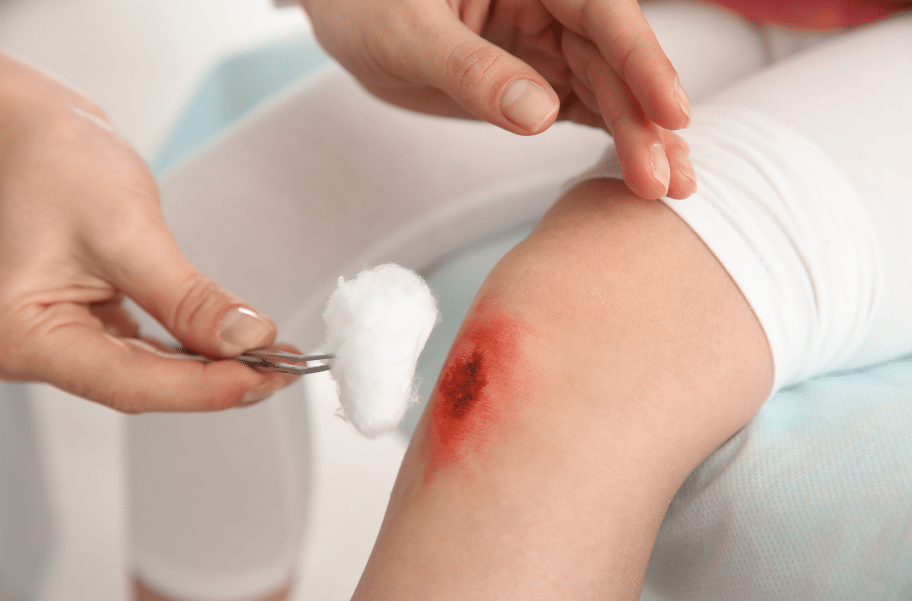
Traditional Wound Care Treatments
Our comprehensive guide on
traditional wound care treatments!
Time-Tested Approaches for Healing
Traditional Wound Care involves time-tested methods and treatments that are fundamental in managing and healing various types of wounds. These techniques focus on creating a clean, protected environment that promotes natural healing processes. Traditional wound care is often the first line of treatment for minor wounds and is an essential part of comprehensive wound management for more complex cases.

Understanding Traditional Wound Care
Traditional wound care methods have been passed down through generations and are often based on natural remedies and practical knowledge. These treatments focus on promoting healing, preventing infection, and providing comfort to individuals with wounds of all types.
Key Components of Traditional Wound Care
- Cleaning and Debridement: The first step in traditional wound care is thorough cleaning and debridement of the wound. This involves removing dirt, debris, and dead tissue to create a clean environment conducive to healing. Common cleaning agents include soap and water, saline solution, or herbal infusions with antimicrobial properties.
- Dressings and Bandages: Traditional wound dressings are designed to protect the wound from further injury, absorb excess moisture, and promote healing. Materials such as clean cloth, gauze, and natural fibers like cotton or linen are commonly used. Bandages are applied to hold dressings in place and provide support.
- Topical Remedies: Various natural and herbal remedies have been used for centuries to treat wounds and promote healing. These may include poultices made from plants with anti-inflammatory or antimicrobial properties, such as aloe vera, honey, calendula, or comfrey.
- Supportive Care: Traditional wound care also emphasizes holistic approaches to healing, including nutrition, hydration, and rest. Adequate intake of nutrients like vitamins A, C, and zinc is believed to support the body's natural healing processes.
Our Traditional Wound Care Treatments
1. Wound Cleaning and Debridement
Cleaning the wound is the first step in our wound care protocol. We focus on removing dirt, debris, and necrotic tissue to prevent infection and promote healing. Our debridement techniques include surgical instruments, mechanical methods, enzymatic agents, and autolytic processes.
Benefits:
- Reduces the risk of infection
- Creates a clean wound bed conducive to healing
- Enhances the effectiveness of subsequent treatments
2. Application of Dressings
We use a variety of dressings to protect wounds, maintain a moist environment, and absorb exudate. Our commonly used dressings include gauze, foam, hydrocolloid, and alginate.
Benefits:
- Protects the wound from contaminants and trauma
- Maintains an optimal moisture balance for healing
- Can be customized to suit different wound types and healing stages
3. Use of Antibiotic Ointments and Creams
To prevent or treat infections, we apply topical antibiotics such as bacitracin, neomycin, and polymyxin B.
Benefits:
- Reduces bacterial load in the wound
- Prevents infection spread
- Promotes faster healing by keeping the wound clean
4. Moisturizers and Barrier Creams
We apply moisturizers and barrier creams to the skin surrounding the wound to keep it hydrated and protect it from further damage. These products are particularly useful in preventing skin breakdown in patients with chronic wounds.
Benefits:
- Prevents dryness and cracking of the surrounding skin
- Provides a protective barrier to reduce irritation
- Supports overall skin health and aids in wound healing
5. Compression Therapy
In cases where edema is a concern, we use compression therapy, which involves applying bandages or garments to exert pressure on the wound area. This treatment is especially effective for venous leg ulcers.
Benefits of Traditional Wound Care Treatments
While advanced wound care treatments offer cutting-edge solutions for complex wounds, traditional wound care methods remain an essential part of wound management. These time-honored practices provide a solid foundation for treating a variety of wounds, especially those that are straightforward and uncomplicated.

-
Simplicity and Accessibility
Traditional wound care techniques are straightforward and easy to administer, both at home and in clinical settings. This makes them accessible for everyone, ensuring that wounds can be managed effectively without the need for specialized training or equipment.
-
Effective for Minor Injuries
These methods are particularly effective for treating minor injuries such as small cuts, scrapes, and abrasions. They provide the necessary care to clean, protect, and promote healing for less severe wounds.
-
Immediate First Aid
Traditional wound care is ideal for providing immediate first aid. Cleaning a wound with soap and water, applying an antiseptic, and covering it with a sterile bandage can prevent infection and kickstart the healing process.
-
Supports Natural Healing
By keeping the wound clean and protected, traditional methods support the body’s natural ability to heal itself, allowing for efficient recovery.
Why Choose Traditional Wound Care?
At our MetaCure, we are dedicated to helping you find the most effective treatments and solutions for your wound care needs. Whether you’re dealing with a minor injury, a chronic wound, or a complex surgical wound, we’re here to provide you with the information, resources, and support you need to achieve optimal healing and recovery.